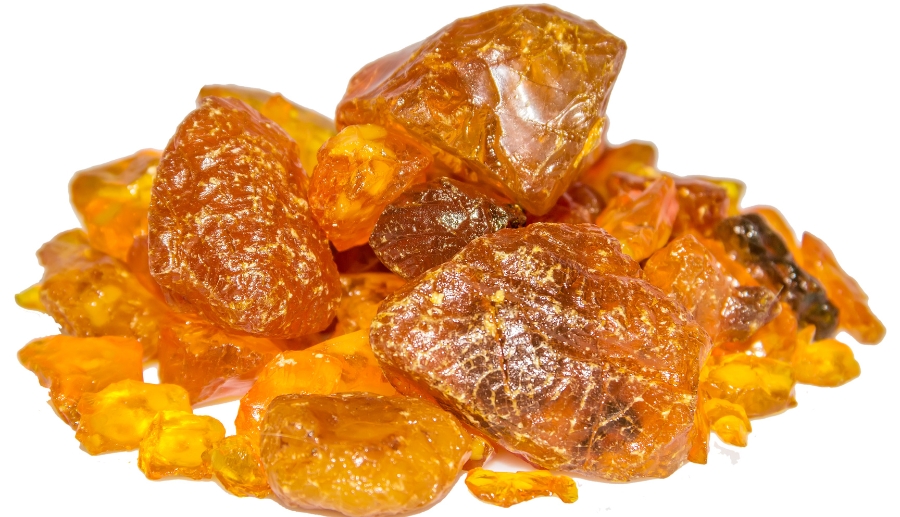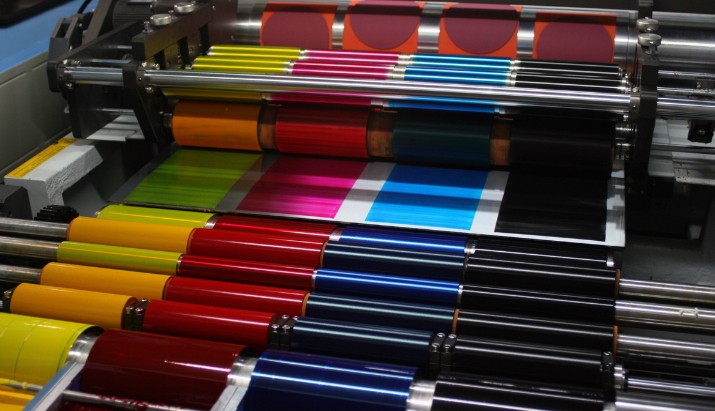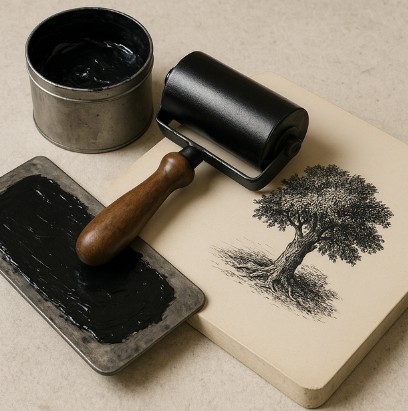
In high-speed, precision-driven printing technologies like sheet-fed offset, web offset and lithographic printing, ink formulation is critical to achieving performance and print fidelity. The quality of adhesion, gloss, drying behavior and substrate compatibility hinges significantly on the resin backbone of the ink. Enter Rosin Modified Phenolic Resins – a class of functionalized binders designed to optimize rheological properties and provide exceptional adhesion and clarity across diverse printing techniques.
This article explores how phenolic resin modified with rosin, such as PH-100120 and PH-5060, empowers the printing industry by ensuring consistent ink flow, substrate compatibility and color strength in various printing methods. We’ll also compare key resin properties and discuss their real-world impact on ink behavior
What are Rosin Modified Phenolic Resins?
Rosin Modified Phenolic Resins are formed by modifying phenolic resins – traditionally known for their hardness and thermal resistance – with natural rosin. This modification imparts better flexibility, enhanced gloss and improved solubility in ink oil systems.
Key Characteristics:
- Enhanced tack and flow properties
- Greater adhesion to a variety of substrates
- Stable viscosity across temperature ranges
- Improved pigment dispersion
These attributes make rosin-phenol resins suitable for printing inks, particularly where quick setting, clarity and high-speed application are required.
Benefits of Rosin Modified Phenolic Resins in Sheet-Fed Offset Inks
Understanding Sheet-Fed Offset
This technique involves feeding individual sheets into the press, commonly used for commercial print jobs like brochures, catalogs and packaging. In this application, the resin must enable:
- Sharp ink transfer
- Quick set without excessive absorption
- Gloss and color integrity

How Resins Like PH-100120 Excel
PH-100120, with a melting range of 150 – 160°C and an acid value below 25 mg KOH/g, provides:
- Stable ink flow
- Strong anchoring to coated and uncoated paper
- Vibrant print finish with high scuff resistance
The resin’s low acid value ensures ink stability and reduces risk of pigment settling or phase separation during storage or press runs.
Rosin-Phenol Resins in Web Offset Ink Systems
Web Offset Overview
Web offset printing is optimized for high-volume runs on continuous paper rolls, like newspapers, periodicals and directories. Here, inks must dry quickly, resist picking and maintain consistent transfer over long runs.
Why PH-5060 Works
PH-5060, melting at 140–150°C with a similarly low acid value, delivers:
- Enhanced transfer across rubber blankets
- Optimized setting for heat-set or cold-set presses
- Minimal misting at high speeds
Rosin-modified phenolic resins reduce issues such as dot gain and allow better drying control via hot air or infrared systems, improving sharpness in text and graphics.

Lithographic Ink Applications in Phenolic Rosin Resin: Clarity and Control
Lithography depends on the principle of oil-and-water repulsion, demanding precise ink rheology. Rosin modified phenolic resins help achieve:
- Defined ink/water balance
- Quick drying without emulsification
- Excellent plate wear resistance
Application Insights:
- PH-100120 and PH-5060 support both conventional and UV-cured lithographic systems.
- These resins help retain ink sharpness while preventing feathering or water pickup.
- High gloss and clarity are consistently achieved, even on challenging substrates.

Gravure Ink Compatibility with Rosin Phenol Resin: A Bonus Benefit
Although primarily optimized for offset systems, rosin-modified phenolic resins like PH-5060 also perform in gravure printing inks – noted for producing fine detail on flexible packaging and decorative prints.
Advantages in Gravure:
- Smooth transfer from engraved cells to substrate
- Good solvent compatibility
- Uniform film formation on flexible materials
This cross-platform utility makes them ideal for multi-process production environments where both offset and gravure are used.
Comparative Overview of PH-100120 and PH-5060
| Property | PH-100120 | PH-5060 |
| Appearance | Dark brown lumps | Dark brown lumps |
| Melting Range | 150–160°C | 140–150°C |
| Acid Value (mg KOH/g) | ≤ 25 | ≤ 25 |
| Application Focus | Sheet-fed, Litho, Gravure | Web offset, Litho, Gravure |
Both grades are manufactured by Tridev Resins, a trusted rosin modified phenolic resin supplier known for consistent quality and performance in print formulations. Their properties align well with high-output systems where precision and long-run stability are non-negotiable.

Conclusion
Rosin modified phenolic resins are essential to the formulation of high-performance printing inks. Whether you’re working with sheet-fed, web offset or lithographic systems, choosing the right resin – like PH-100120 or PH-5060 – ensures superior adhesion, flow and finish on a wide range of substrates. These resins combine the rigidity and clarity of phenolic backbones with the flexibility and solubility of rosin, enabling vibrant, long-lasting print results.
For ink manufacturers aiming to enhance quality and reduce variability, rosin modified phenolic resins provide the chemistry-backed assurance needed for modern, fast-paced printing environments.
- Rosin Modified Phenolic Resins Applications in Sheet Fed, Web Offset & Lithographic Inks
- Water-Based Acrylic Emulsions Dual Protection: Abrasion Resistance and Bio-Shielding for Coatings
- Formulation Tips for Adhesion Promoter: Balancing Titanium Content and Viscosity in Flexo Ink Systems
- Tailored Phenolic Resin Viscosity: Enhancing Varnish and Low-Temperature Ink Performance
- How Polyamide Resins Enhance Corrosion Resistance and Structural Coating Performance?



